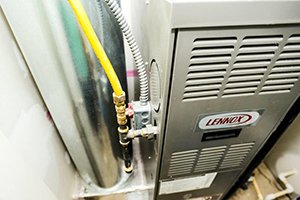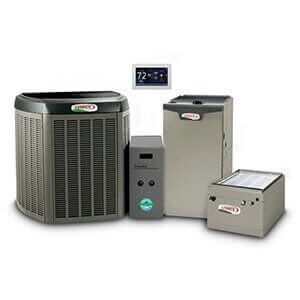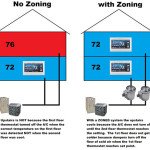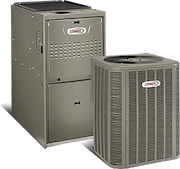
The world of HVAC often throws around many different terms that can cause some confusion when researching the best heating and cooling system for your home. This guide to HVAC terms should help you discover more about your home’s furnace or air conditioner and learn more about what each of the different terms means.
If you have a heating and cooling project in mind in the St. Louis area, Galmiche & Sons has decades of experiences repairing and installing air conditioners, furnaces, and heat pumps. Contact our heating & air conditioning company today with any questions or for clarification on the HVAC glossary below.
Basic HVAC Terms: Furnaces and Air Conditioners
Many of the HVAC terms you will find reference components, functions, and measurements pertaining to heating and cooling systems. Some of these common terms include:
- AFUE – A measurement of how much natural gas or propane a furnace uses to generate heat, along with how much energy it wastes. The acronym stands for Annualized Fuel Utilization Efficiency. The higher the rating, the more efficient the furnace.
- Air exchange rate – This refers to the rate that air from outside replaces the air indoors. It measures how many times the air changes per hour and how much—or the cubic volume—of air that is replaced.
- British thermal unit – You will often see this HVAC term written as BTU. It measures the amount of heat needed to change a pound of water’s temperature one degree. This measurement is commonly used when referring to a furnaces heat output.
- Condenser coil – Located inside your air conditioner or heat pump, this is filled with refrigerant fluid, also known as coolant, which cools and circulates the surrounding air.
- Cooling capacity – This measurement refers to an air conditioning systems’ ability to cool a room in one hour.
- Draft – In HVAC terms, a draft does not necessarily mean that you have a leaking house. It refers to how heat air moves through a chimney or flue.
- Energy Star rating – You have probably seen this sticker on many appliances and electronics. The Energy Star Program was created by the U.S. Environmental Protection Agency to measure how energy efficient a product is, especially compared to a government standard.
- Freon – A common compound found in HVAC systems as a coolant. “Freon” is actually a branded name, trademarked by DuPont.
- Heat exchanger – This is a device found inside the furnace, which helps pass the furnace’s generated heat into the air, to then be circulated throughout the home.
- Heat loss – This HVAC term refers to how much heat in a building is lost to the outside. The less heat loss your home has, the easier it is for your HVAC system to heat your home.
- HEPA – Stands for High Efficiency Particulate Arrestance. This term is used to describe a high performing air filter.
- MERV rating – A rating used to qualify air filters, which stands for Minimum Efficiency Reporting Value. This rates the size of the holes in your filter. Filters with higher MERV ratings have smaller holes and allow only the smallest particles to pass through.
- Plenum – This is an HVAC term for a specific section of ductwork, which connects the rest of the ducts in the system to the air handler.
- Return duct – Often a system will reuse the air inside a home to heat or cool the building. It receives the air through this duct.
- Supply duct – In a forced air system, the system pushes hot or cool air through supply ducts to reach the whole building.
- Two-stage operation – This is a specific furnace system that offers more flexibility, reduced utility costs, and improved air quality. A standard furnace or air conditioner operates at full capacity until it’s met the desired heating or cooling output. However, a two-stage unit has two stages or levels of heating or cooling output. The low speed is used on mild days to consume less fuel.
Other HVAC Terms for Your Home

In addition to the terms relating to your furnace or air conditioner components and functionality, here are some additional HVAC terms you might come across when discussing your home’s energy efficiency.
- HERS – This HVAC term stands for Home Energy Rating System, which is a program used to rate the overall quality of energy use in a home, especially the measurement of energy loss deficiencies. This rating program is used by builders, mortgage lenders, and homeowners.
- HVAC home zoning – With HVAC zoning, you can program your HVAC system to divide your home into separate areas to allow them to be heated or cooled as needed. This allows you to save money and reduce energy costs by only heating or cooling areas of the home you are actually using.
- IAQ – This acronym stands for Indoor Air Quality, and measures how much air pollution is in a building.
- Infiltration – When a structure has cracks, air can leak into the building from outside. This is known as infiltration.
- Radiant barrier – This prevents solar heat from entering the building and can typically be found in attics.
- SEER – This is a term HVAC professionals use to rate the efficiency of an HVAC system. The acronym stands for Seasonal Energy Efficiency Ratio, and it measures the amount of energy used by a system to regulate temperature over the year.
Need Help Better Understanding HVAC Terms?
Hopefully, this HVAC terms glossary has helped clear up the many words that float around your furnace and air conditioner. If you are thinking of upgrading or replacing your current equipment, you will know the right HVAC terms when looking online for your options. If you have any questions about any of the HVAC terms above or would like help selecting the best new HVAC system, contact our St. Louis heating & air conditioning company today!












